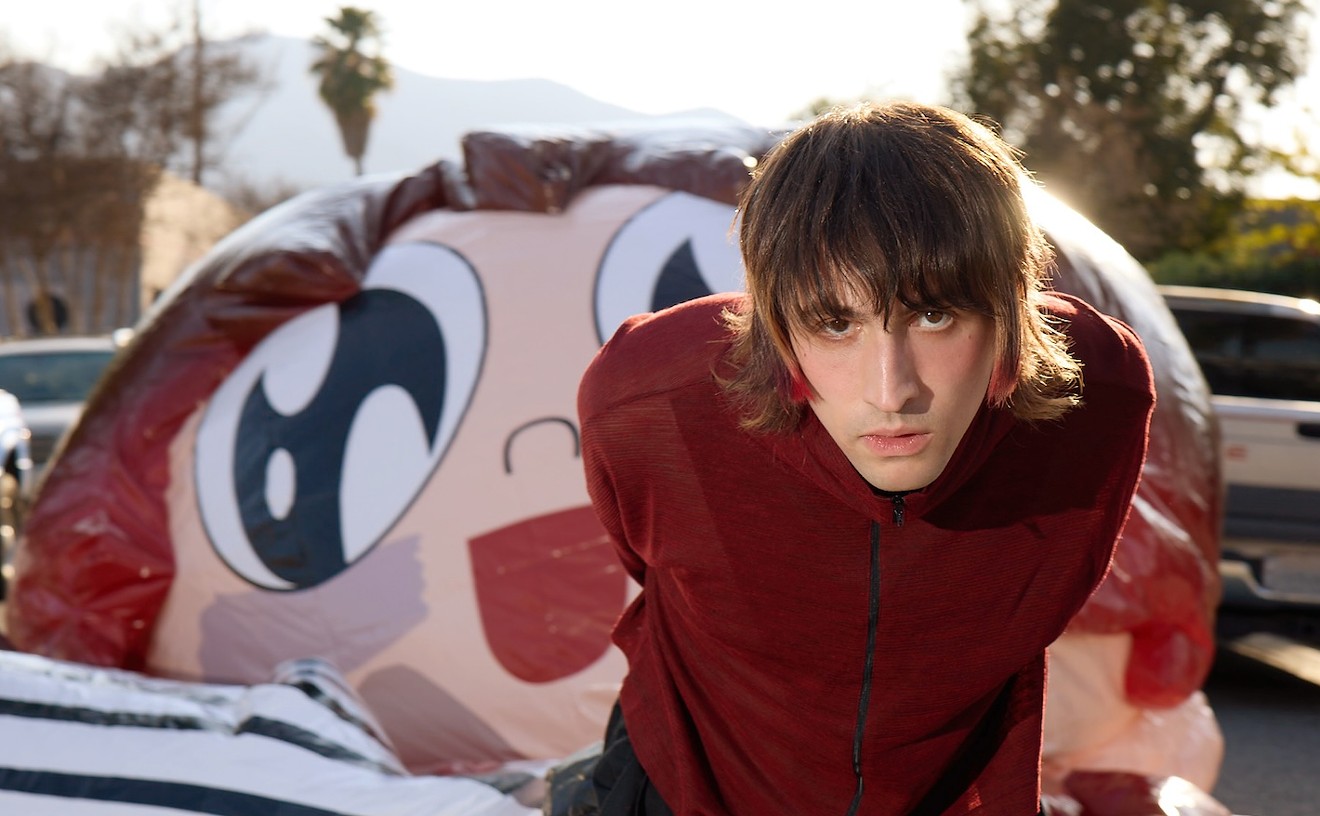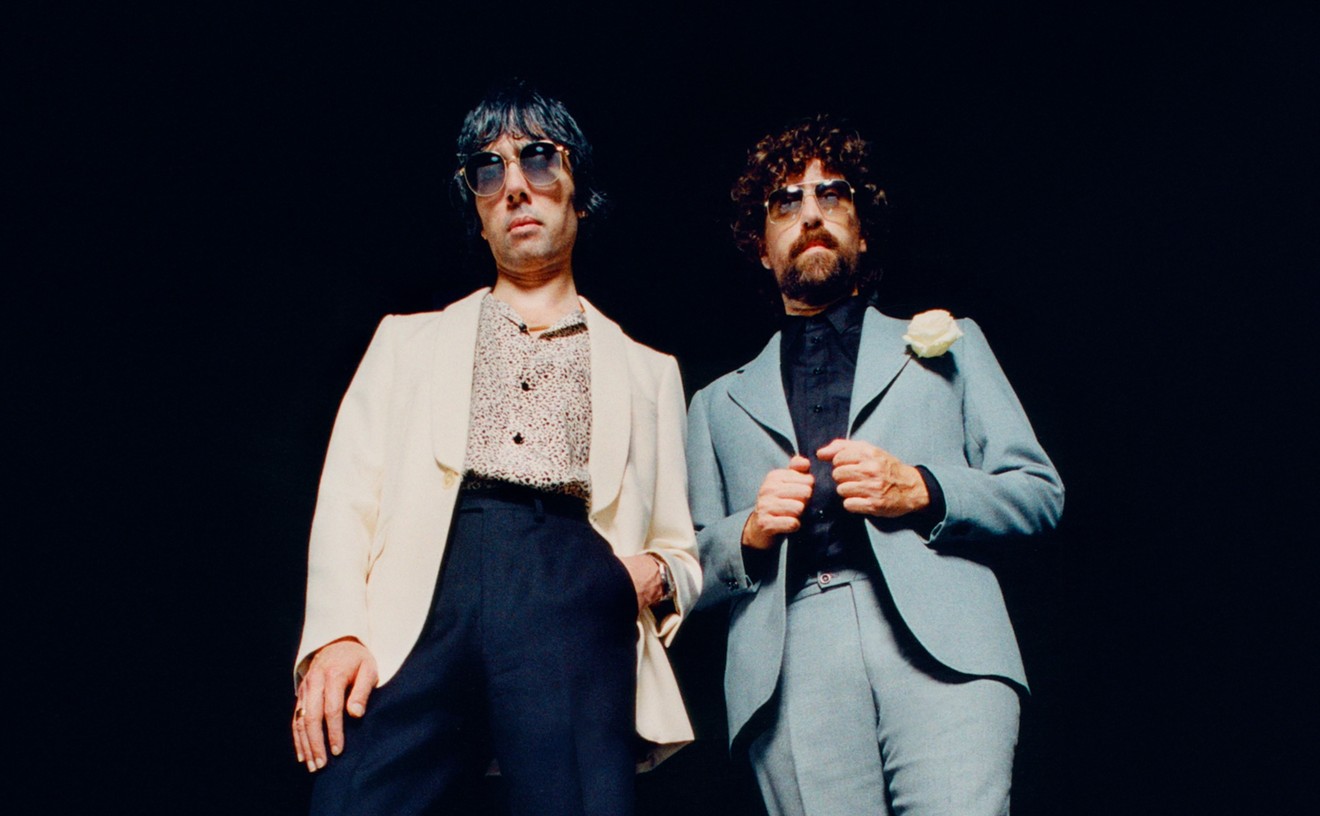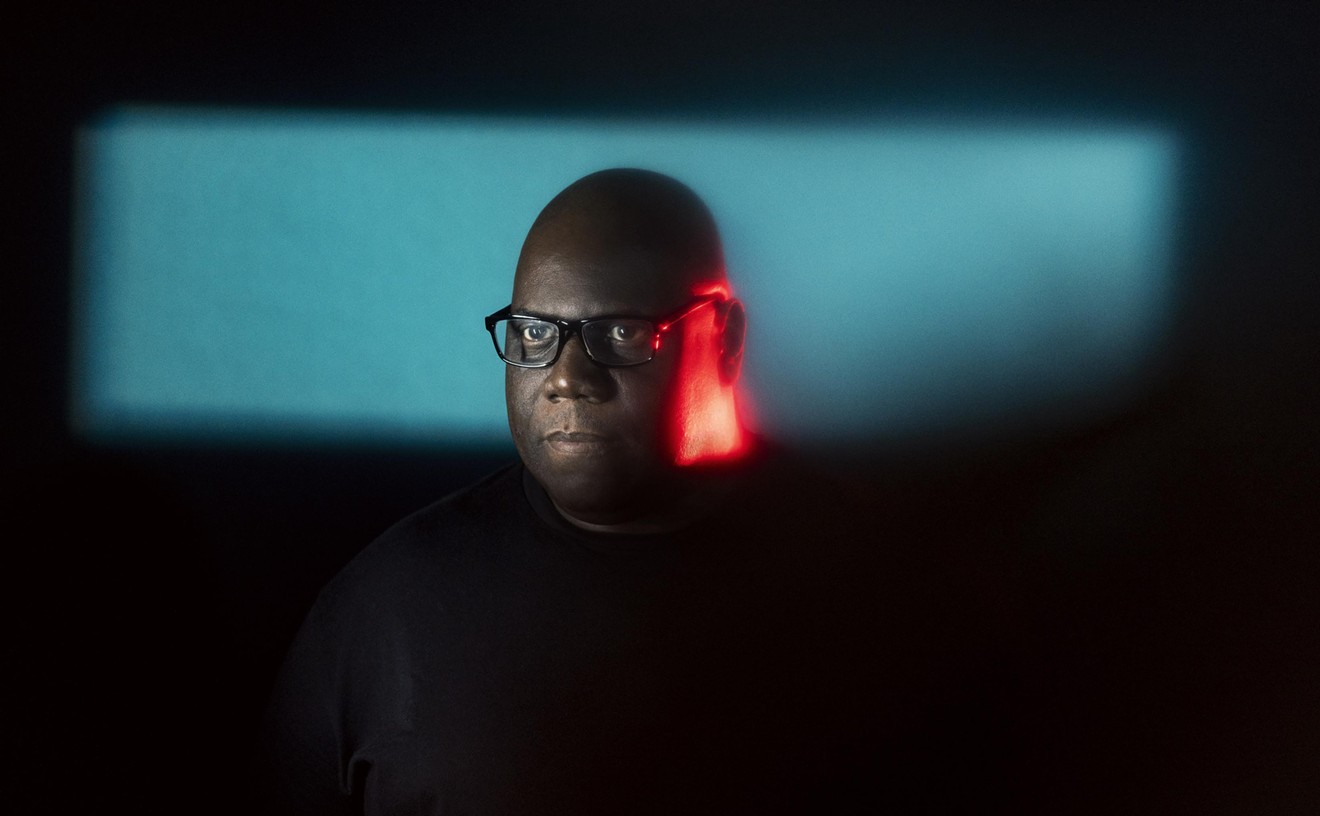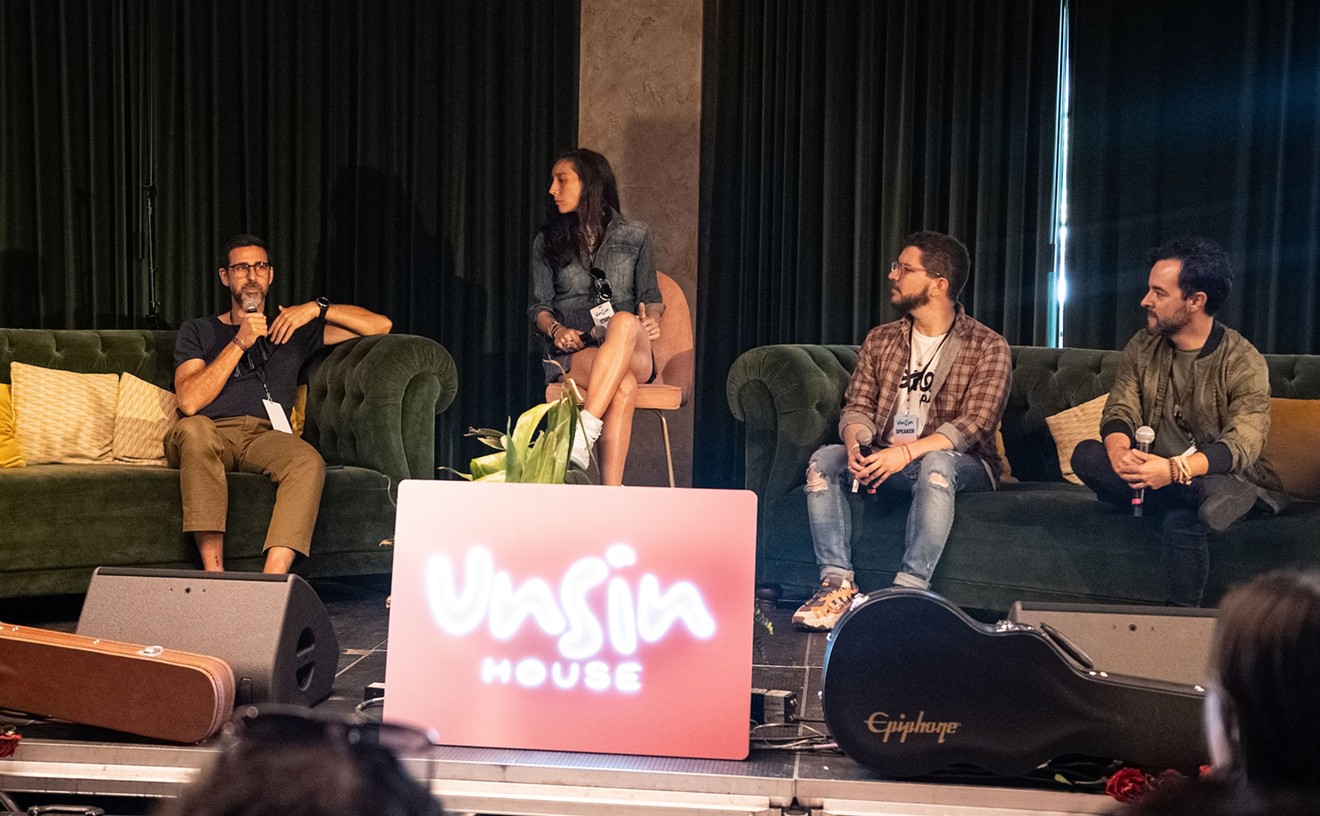“I had been in various bands since 1987, and the last band I was in, Killer Kane, showed early signs of the direction I wanted to go in musically. I wanted to emphasize rawness, heavy guitars, feedback, and distortion. At that time, I was listening to bands like the Laughing Hyenas, Neurosis, and Unsane,” says Dan Gorostiaga, discussing where he was musically as the 1990s arrived. “These bands were taking their punk roots and going in different directions with them. We came from the same place. We just wanted to play slower, thicken our guitar sound, and use lots of feedback. That was our initial intention.”
Formed in the early ’90s and far ahead of the eventual grunge explosion of similarly styled outfits, Cavity was a pioneer of the sludge and doom metal scene. The brainchild of bass player Gorostiaga, a onetime member of local hardcore legend Powerhouse, Cavity would become symbolic of Miami’s underground music scene in the mid-’90s: unique in sound, multi-influenced, geographically challenged, misunderstood, and a helluva lot better than others — not only in the U.S. but also the world.
“I met Rene Barge at a concert at the Cameo,” Gorostiaga recalls, referring to the then-punk South Beach venue. “I told him I wanted to keep playing music, and he was interested in singing. Slowly, we started to find other people who were in tune with us. Raf Luna, later of the Crumbs, was our first guitar player. We found a drummer, Joey, and we started playing as Crawl.”
This initial lineup would write and record a demo, as well as play live. A running joke at the time was that Cavity started out as Crawl and did a mini-tour without playing a single note.
Barge, also an artist who has gone on to receive acclaim for his work in sound, both alone and with experimental composer Gustavo Matamoros, was Gorostiaga’s second in command in Cavity. A reserved and deliberate speaker, Barge was a demon when unleashed onstage, and Cavity shows always carried a certain sense of danger because of his magnetic, almost-Svengali-like presence on the microphone.
“We also started to tune our guitars lower, so our sound changed a bit,” Gorostiaga says. “We recorded six new songs, which became the official Cavity demo, and the rest is history.”
Barge was essentially a fixture on vocals, but Cavity’s entire history would be marked by a revolving door of drummers and guitarists, as well as periods in which vocal duties would fall to guitarist Anthony Vialon. This unique system became a proving ground for many Miami-area musicians. If you recall the basic premise of the Kevin Bacon game, you can play Six Degrees of Cavity, with connections that reach deep into today’s musical landscape.
“There’s no secret behind who ended up playing with us throughout the years,” the bass player points out. “If you liked our music and we got along, then you could play with us.”
Drummers included Jason Lederman, Dan Norris, Jorge Alvarez, and Beatriz Monteavaro, to name just a few that many Miami music fans may recognize. Guitars were wielded by Juan Montoya, John Bonanno, Ryan Weinstein, Jason Landrian, Steve Brooks, and Ed Matus in the numerous four- and five-piece incarnations of the band.
“Everyone who played with us contributed in their particular way to each one of our releases,” Gorostiaga says. “Some of them created deconstruction within, others added groove and blues influences, others allowed us to play really fast or really slow, etc. All of our records show what the chemistry of the group was at the moment; it’d be a lengthy description if I had to list how each member contributed to the band’s music.”
Recording labels would also hold revolving-door status with the band, though the visually progressive aesthetics of its releases, especially those such as a now-coveted early effort on legendary rock artist Pushead’s Bacteria Sour imprint, made the group a favorite among punk collectors, even if there was always a certain amount of uncertainty about exactly how to get hold of the next Cavity record. (The outfit has released four full-length LPs and at least a dozen EPs, 45s, and split seven-inches, so no serious appreciator of Florida music can boast a complete catalog without spending a pretty penny on many of this band’s obscure and limited-edition releases.)
Yet despite the high rate of member turnover and the constant switching between labels, this was ultimately a serious band comprising serious musicians who, unbeknownst to them at the time, were forging a unique musical legacy. After Gorostiaga, Barge, and company’s records began making the crossover to Japan, thanks in part to Pushead’s connections, reports began arriving via fanzines and punk publications like Maximum Rock’n’Roll and Rational Inquirer that Cavity imitators were springing up in Asia and Europe. Meanwhile, America remained largely oblivious to the group’s existence.
However, there were plenty of rock, punk, and metal obsessives who were aware of the band, which allowed Cavity to be one of the few South Florida outfits of the time that put in plenty of miles on the road. But even though fans all over the country knew and loved Gorostiaga and crew’s brutal sound, they didn’t know what these not-quite-famous Miami guys looked like — and they were sometimes surprised. As Julio Najara, former member of Disney Violence and onetime roadie for Cavity recalls, the crowd at the Fiesta Grande festival in California was initially confused by the clean-cut men in button-up shirts taking the stage before being blown away by the sheer intensity and viciousness of their set.
It’s been decades since those days, and Cavity has no immediate plans to return to the touring circuit. But the outfit has agreed to a one-night reunion at Churchill's Pub this weekend. Miami’s younger rockers, punks, and metalheads should not underestimate the significance of Gorostiaga and his bandmates’ gracing a South Florida stage again.
This show should be a momentous occurrence, and given the intensity of their catalog and the professionalism of past members, we doubt that age and the passage of time will detract from the performance — especially if Gorostiaga’s impromptu 2014 set with San Francisco duo Black Cobra at Wynwood’s Gramps was any indication.
“The Black Cobra show was just a chance for me to get up there and play some songs,” he says. “It felt great, and the response was very impressive. Afterwards, I gave some thought to a full-on Cavity reunion but didn’t fully pursue it.”
That changed when Priya Ray, of another essential Miami rock band, Kreamy ’Lectric Santa, “called and said they were doing a show here,” Gorostiaga adds. “I then knew it was time.”
The reunion will coincide with the latest push in a fundraising campaign to purchase an accessible van for Ray, whose spinal injury from a 1998 fall has required her to use a wheelchair.
“She and countless others have asked for something like this to happen,” Gorostiaga says. “But the decision to do this show has got a lot to do with helping Priya accomplish her goal.”
Asked what exactly can be expected from Cavity’s set, he replies, “We decided to concentrate on earlier material because this is the stuff we used to play with KLS when we first started. For us, it’ll be like a blast from the past. We used to play together a lot in the early to mid-’90s.”
On the topic of the evening’s roster, though, Gorostiaga is coy.
“Cavity lineup?” he teases. “I’m not disclosing any info, so you’re better off showing up and finding out on your own.”
Cavity. With Kreamy ‘Lectric Santa, Snakehole, Rat Bastard, and Shark Valley Sisters. 9 p.m. Friday April 10, at Churchill’s Pub, 5501 NE Second Ave., Miami; 305-757-1807; churchillspub.com. Admission costs $10. Ages 18 and up.
[
{
"name": "Air - MediumRectangle - Inline Content - Mobile Display Size",
"component": "19274298",
"insertPoint": "2",
"requiredCountToDisplay": "2"
},{
"name": "Editor Picks",
"component": "17482312",
"insertPoint": "4",
"requiredCountToDisplay": "1"
},{
"name": "Inline Links",
"component": "18711090",
"insertPoint": "8th",
"startingPoint": 8,
"requiredCountToDisplay": "7",
"maxInsertions": 25
},{
"name": "Air - MediumRectangle - Combo - Inline Content",
"component": "17482310",
"insertPoint": "8th",
"startingPoint": 8,
"requiredCountToDisplay": "7",
"maxInsertions": 25
},{
"name": "Inline Links",
"component": "18711090",
"insertPoint": "8th",
"startingPoint": 12,
"requiredCountToDisplay": "11",
"maxInsertions": 25
},{
"name": "Air - Leaderboard Tower - Combo - Inline Content",
"component": "17482313",
"insertPoint": "8th",
"startingPoint": 12,
"requiredCountToDisplay": "11",
"maxInsertions": 25
}
]










